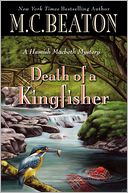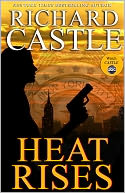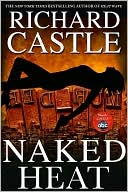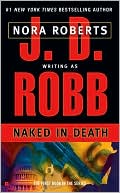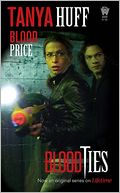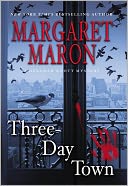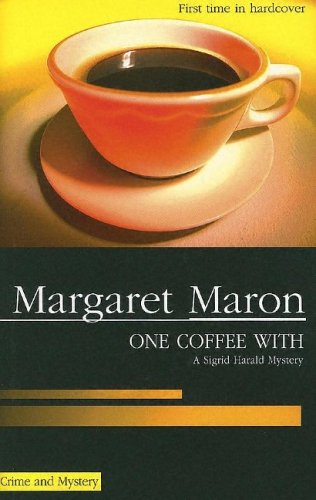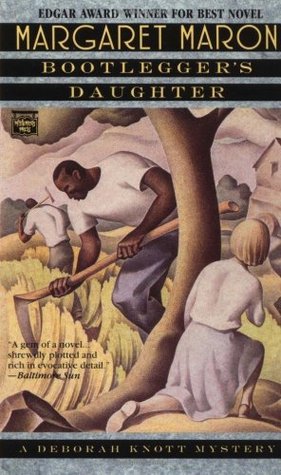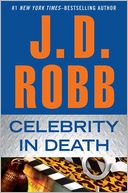 If Eve Dallas were of a more philosophical bent, she would have meditated on the “life imitates art imitates life” nature of her latest case in Celebrity in Death. But the character that J.D. Robb created over 30 books ago is all hard-nosed murder cop, and that’s why we love her adventures. That’s also why her multi-billionaire ex-criminal husband Roarke loves her too.
If Eve Dallas were of a more philosophical bent, she would have meditated on the “life imitates art imitates life” nature of her latest case in Celebrity in Death. But the character that J.D. Robb created over 30 books ago is all hard-nosed murder cop, and that’s why we love her adventures. That’s also why her multi-billionaire ex-criminal husband Roarke loves her too.
But Celebrity in Death is a story-within-a-story. And possibly several iterations beyond that.
 For Eve, it’s only been a couple of years since she cracked the Icove case. Dr. Wilfred Icove tried to beat death by cloning human beings, and died for his sins, and his secrets (Origin in Death). The case was so high-profile, and so scandalous, that Eve’s friend and go-to reporter, Natalie Furst, was able to make a best-seller out of her book on the inside story. That book, The Icove Agenda, is being filmed in New York, and the producers want to get all the real-life principals to interact with their actor-counterparts.
For Eve, it’s only been a couple of years since she cracked the Icove case. Dr. Wilfred Icove tried to beat death by cloning human beings, and died for his sins, and his secrets (Origin in Death). The case was so high-profile, and so scandalous, that Eve’s friend and go-to reporter, Natalie Furst, was able to make a best-seller out of her book on the inside story. That book, The Icove Agenda, is being filmed in New York, and the producers want to get all the real-life principals to interact with their actor-counterparts.
The resemblances are eerie, at least the physical ones. Especially when the makeup is in place and the camera is running. But off-camera, the differences are glaring. One difference in particular–Detective Delia Peabody is a genuinely nice woman, but the actress portraying her, K.T. Harris, is an absolute bitch.
Eve Dallas always stands for the dead, whether they are likeable or not. So when K.T. is murdered in the middle of a dinner party Eve is attending for all the movie people and all the original participants in the drama, Eve dives into the hunt for her killer. But not until after she shakes off that cold shiver at seeing a dead ringer for her partner dead in a pool.
At first there are too many suspects, and too few. Everyone detested the dead woman, but no one remembers who left the party and when, because the entire group was watching the movie “gag reel” at the time of death.
As events unfold, Eve discovers that K.T. Harris was both victim and victimized in her life. And although Eve sees the similarities to herself, she doesn’t sympathize much. K.T. made her choices, and they were all the wrong ones.
The case takes a surprising twist, and there are more dead for Eve to stand up for than she expected. But that’s what Eve Dallas does, every time.
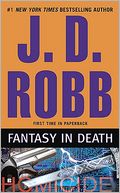 Escape Rating B+: While I enjoyed this one, it wasn’t as riveting as New York to Dallas (see review), or my personal favorite, Fantasy in Death.
Escape Rating B+: While I enjoyed this one, it wasn’t as riveting as New York to Dallas (see review), or my personal favorite, Fantasy in Death.
The dynamics of the cop shop are as much fun as ever. The scene where Dallas and Feeney have to watch a recording of a suspect couple’s private moments to determine whether or not it was tampered with is priceless. Their mutual embarrassment is just so perfect for their relationship.
This story didn’t ratchet up the tension the way that the stories normally do. There isn’t a lot of death, and there just doesn’t seem to be a lot at stake for most of the participants. While a lot of people involved are being bribed, few seem to be getting blackmailed. Something is missing.
Only in mystery fiction do we go looking for more death. But for my taste this story needed a couple more fresh corpses to give it body.

